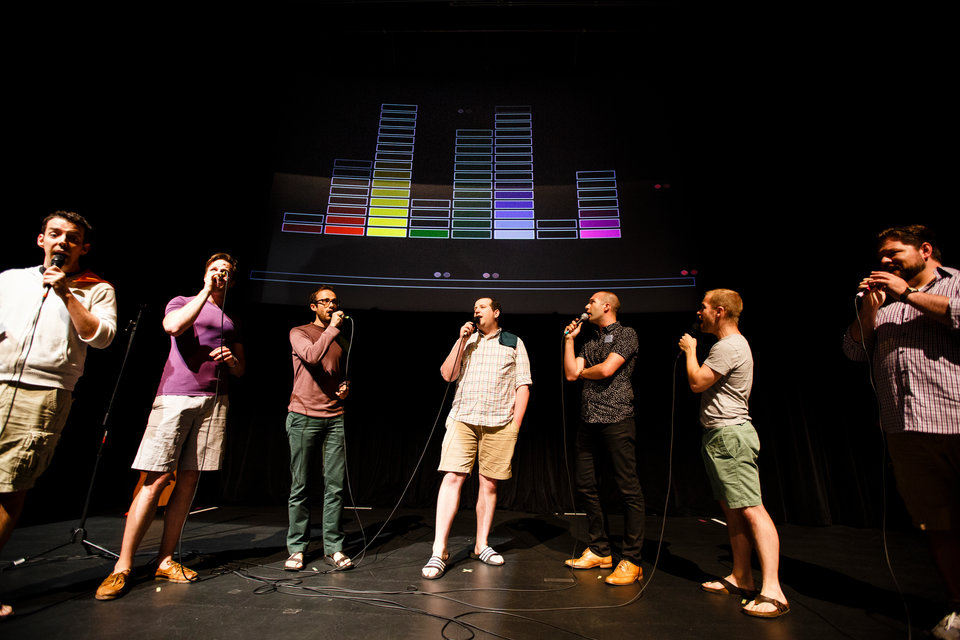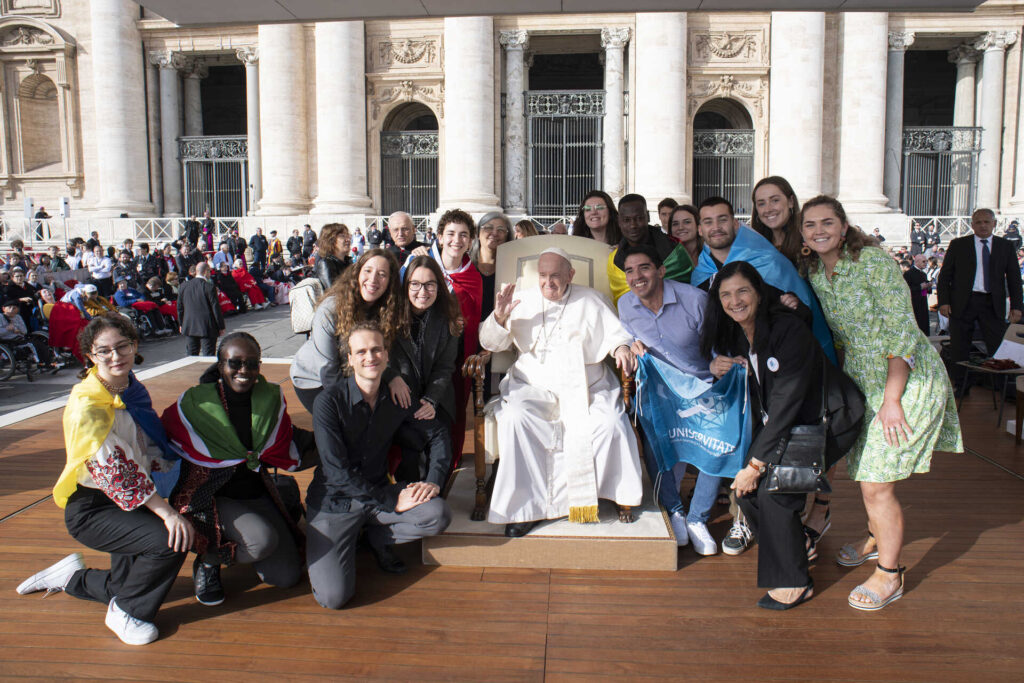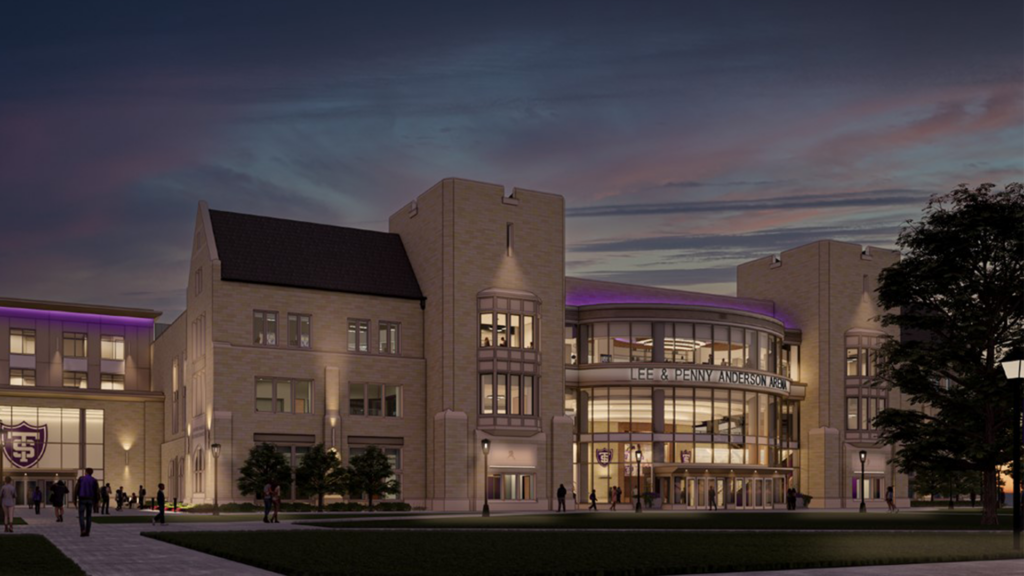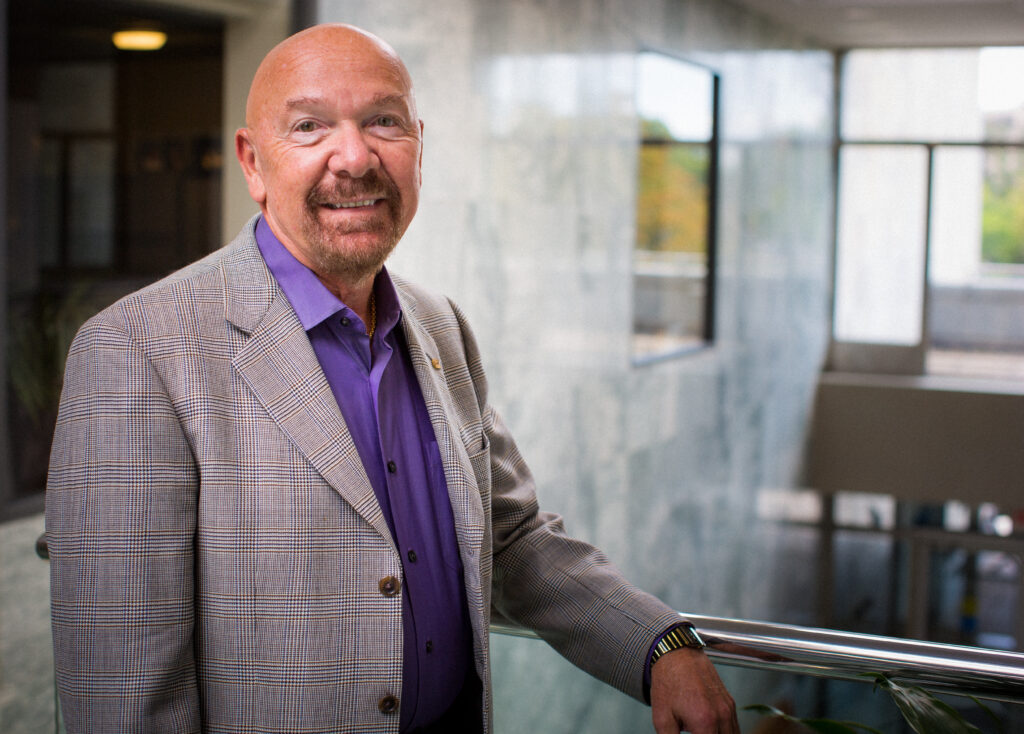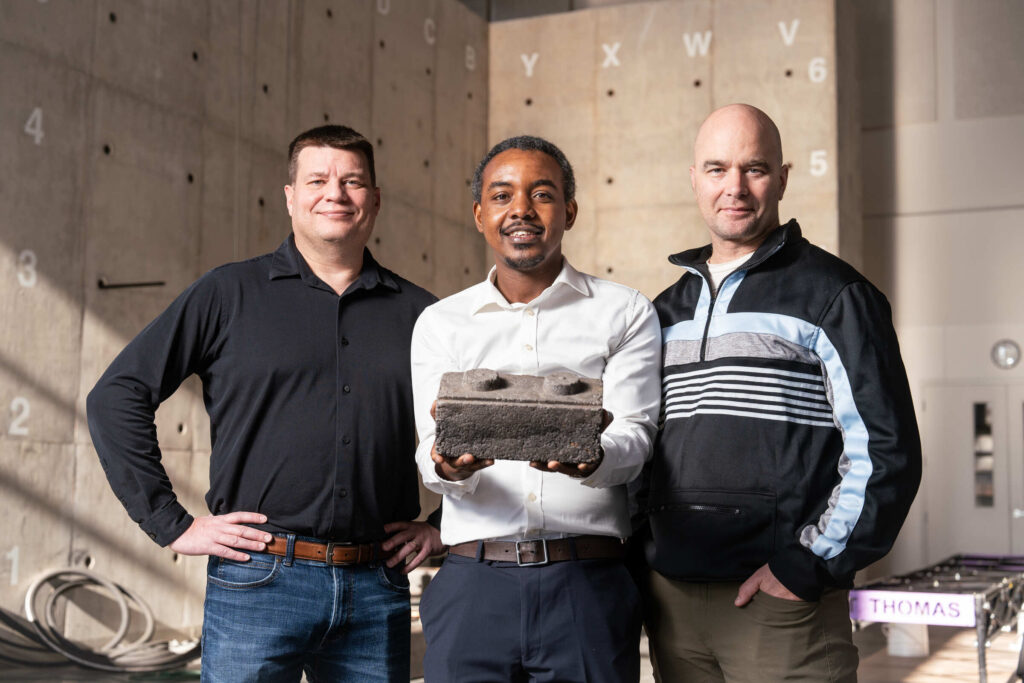St. Thomas a capella group Cadenza has performed dozens of times in many venues, but their performance in January at the Science Museum of Minnesota was different. The 100-plus audience members could not only hear the music, but see it.
That’s because the performance was part of Code and Chords, an interdisciplinary project at St. Thomas out of Associate Professor of Engineering and Entrepreneurship AnnMarie Thomas’ Playful Learning Lab. Over the past two-plus years Code and Chords has developed a unique way to, as senior Emily Meuer, the project’s main software developer, put it: “Feel the sound of the music through visuals.”

Members of St. Thomas' singing group "Cadenza" perform at the Science Museum of Minnesota during a recent Code and Chords performance.
So, as seven Cadenza singers’ voices changed pitch and amplitude, mixing with one another through sound waves, that music also was represented visually on a giant screen. The goal of this is not to create a simple light show or iTunes visualizer, said Meuer, who’s also a music minor, but to “get across the true musicality of the sound into the visual.”
The success of that can be seen in several ways, from the positive reactions from concerts like January’s to the fact the software underlining the project recently won the best paper award for the manufacturing division of American Society of Engineering Education. Students have collaborated with St. Paul’s Metro Deaf School, as well as a professional music producer and Cantus, one of the country’s premier men’s vocal ensembles.
“They’re really creating something pretty unique,” Thomas said. “People are really intrigued by it, and it gives us a chance to really explore different ways of looking at things like music and code.”

Emily Meuer (computer science) left, and Amanda Tenhoff (mechanical engineering), right, work on a laptop during a collaborative multimedia performance with the University of St. Thomas Playful Learning Lab and Twin Cities-based singing group Cantus at the Science Museum of Minnesota in downtown St. Paul on July 8, 2016.
Knowledge and leadership growth
The combination of music and code is exactly what drew then-sophomore Meuer to the project in its infancy, and the opportunities it has created for her and fellow students since have defined her educational experience at St. Thomas. As well as getting to put concepts from class into a dynamic real-world application, Meuer said the leadership skills she has developed working with a team on a large-scale project have been invaluable.
“It’s been huge for me,” Meuer said. “That’s probably been the biggest part of the project for me. Just in our team dynamic, even. Being that person is new but definitely a growing experience and not one I had expected coming into school.”
As Meuer approaches graduation and looks to pass enthusiasm and leadership onto younger team members, the experience of those like first-year Grace Kubista will take center stage.
“I definitely did not think I would be doing research yet, as a freshman, to get an opportunity like this,” Kubista said. “It’s really helpful to figure out what I’m interested in, and to see how this all works. It makes my education a lot cooler. It drives me to focus on what interests me. You can sit down and do problems in a textbook … but research is more hands-on, and you’re creating something. It makes the learning a lot more interesting.”
Meuer is proud of the software’s growth, from its improved accuracy and responsiveness in pitch detection, to the development of more software modules that can feed the final product. Thanks to the foundation she and others have laid, Tommies will be exploring their own possibilities with Code and Chords for years to come.
“It’s really interesting what we might be doing in the future,” Kubista said. “I’m looking forward to seeing how we might develop the visuals more, working with graphic artists to make it more in depth. I’m excited to see what more it can do.”
